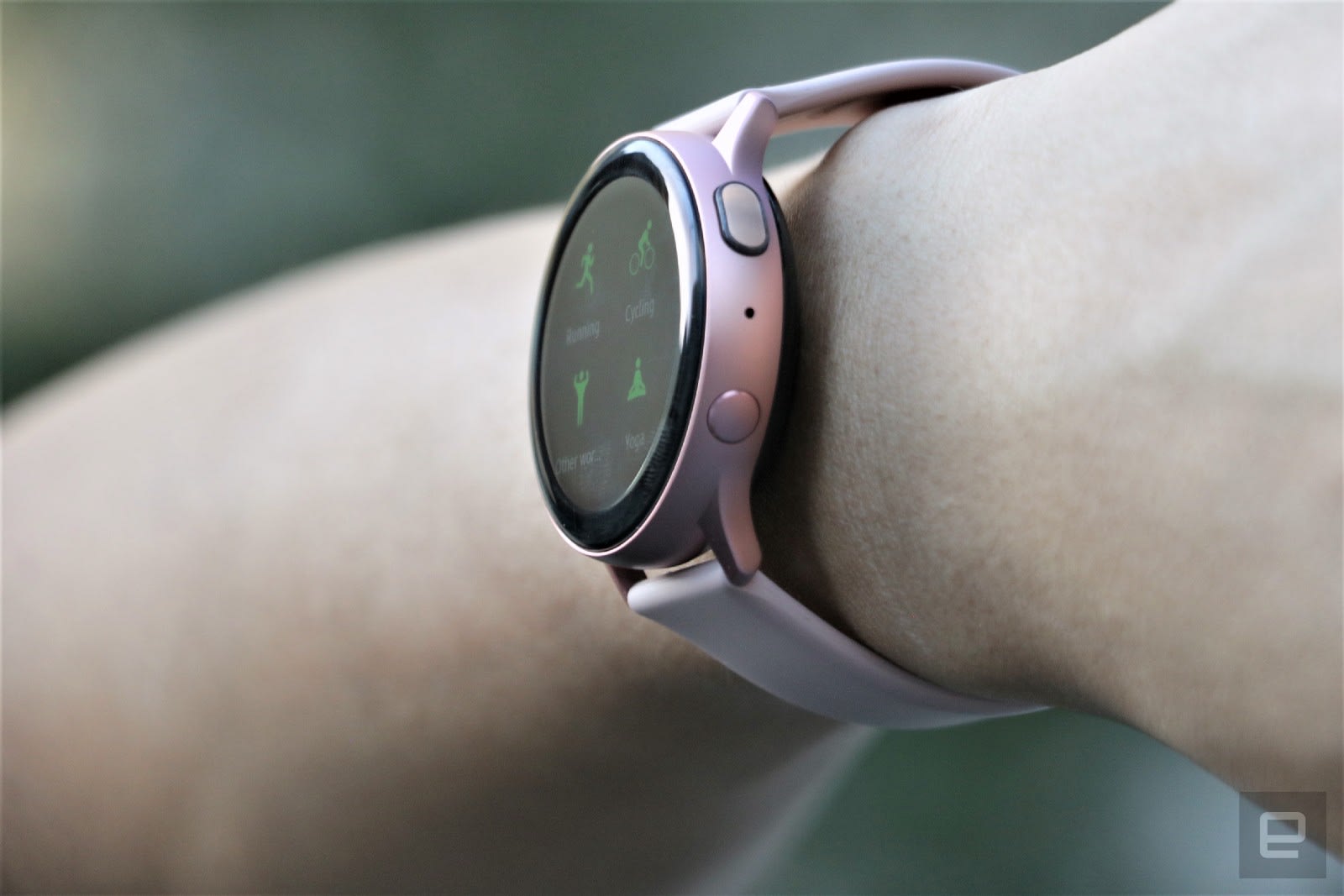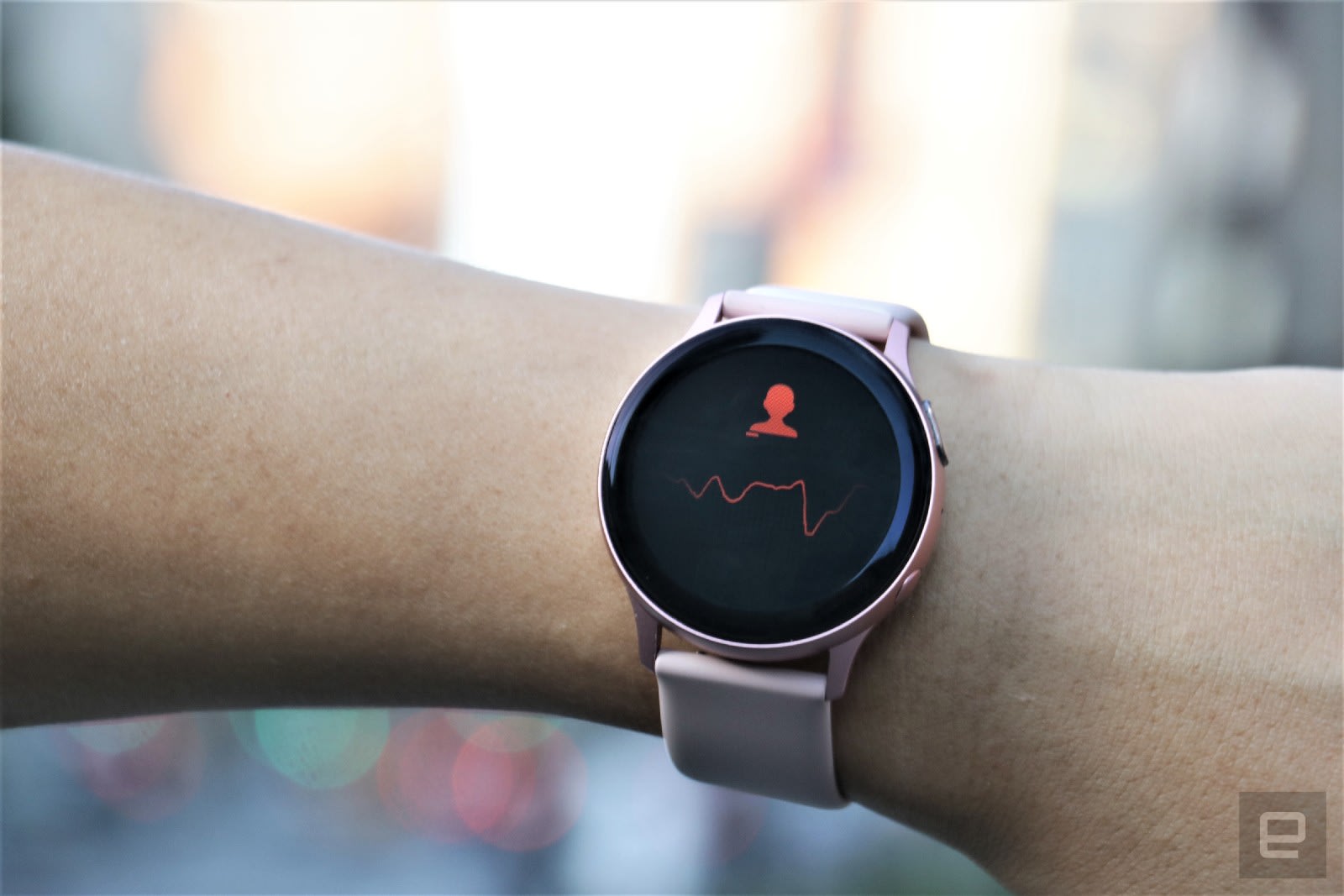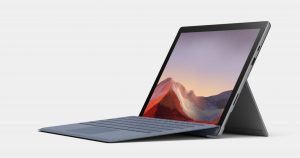But while I used the physical bezel to interact with previous Galaxy watches more than half the time, I barely used this virtual one at all. When I did, it was more for the novelty factor and to feel the haptic response than to get any improvement in speed. Eventually, I just rearranged my widgets so the ones I used most frequently were within two or three swipes from the home screen. This is by no means a ding on Samsung — it just means Tizen’s OS has become easy enough to use that I don’t feel the need to zip through endless pages of apps to find the one I want.
Display and controls
It’s also possible that I find it easier to navigate the Watch Active 2 because of its slightly bigger screen. The original Watch Active’s 1.1-inch screen felt cramped, and though the 40mm Active 2’s 1.2-inch screen is just a teeny bit larger, it feels a lot roomier. The new Active also comes in a 44mm model with a 1.4-inch display, which is even more spacious.
Samsung also tweaked the button on the top right of the watch, making it a little bigger with a textured outline so it’s easier to press. This lets you jump back a page or, when long-pressed, brings up a shortcut you can define. By default this launches Samsung Pay, though I prefer to put music controls here. The smaller, more recessed button below this takes you to the home page or turns the device off.
The new back button didn’t make a huge difference in my experience. If anything, it was a little too easy to accidentally hit and would pause my workouts when I bent my wrist back a little too much, say when I was getting into backbends or handstands in yoga.
Improved fitness-tracking
What felt like a more meaningful improvement were the upgraded sensors. Samsung used twice as many LEDs in the Active 2’s heart rate sensor, making it faster at reading your pulse. It also has an accelerometer that’s supposedly twice as sensitive as before. I can’t tell you exactly how much more precise these sensors are, but I did notice the speed improvement. It was not only quicker but also more accurate at recognizing when I’ve stood up from my desk and taken a stroll, promptly congratulating me when I’ve done so. The Active 2 was also better at automatically detecting when I’ve embarked on a brisk walk than any other watch I’ve tested, showing a screen that tracks my pace and distance traveled once I had been walking longer than 10 minutes.
I like how proactive Tizen is at encouraging you to move more and automatically charting your activity. I wish its workout-tracking tools were a bit more sophisticated, though. When I started a yoga session, for instance, all it did was measure the duration and my pulse throughout the class. Competitors like Garmin are starting to log things like respiration and stress levels for similar activities. Samsung is catching up a little by adding a pacing coach that will tell you to either speed up or slow down as you’re running to hit your stride or time goals. I liked getting the real-time reminders while I jogged, though I recommend you connect your headphones over Bluetooth to hear the suggestions. I could barely hear the Active 2’s speakers over the sound of traffic, even when I put my wrist to my ear.
But what the likes of Garmin, Fitbit and even Wear OS lack are the breadth of tools offered by Tizen. It packs a robust selection of health-centric features like proactive movement reminders, stress-detection, calorie-tracking and sleep-monitoring, but also enables things like smart home control, ride-hailing, music playback and messaging. It even lets you turn your watch into a controller for your PowerPoint presentations, if you want. Wear OS and Fitbit OS support these things, sure, but often you’ll need to install apps to do them. On Tizen, many of these functions are built in.






